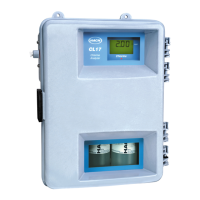Page 72
Certification
54400_cert.fm
Certification
EN 61000-3-3 Voltage Fluctuation (Flicker) Disturbances Caused by Electrical
Equipment
Additional Emissions Standard/s include:
EN 55011 (CISPR 11), Class “A” emission limits
Canadian Interference-causing Equipment Regulation, IECS-003, Class A:
Supporting test records by Hewlett Packard, Fort Collins, Colorado Hardware
Test Center (A2LA # 0905-01) and certified compliance by Hach Company.
This Class A digital apparatus meets all requirements of the Canadian
Interference- Causing Equipment Regulations.
Cet appareil numérique de la classe A respecte toutes les exigences du
Règlement sur le matériel brouilleur du Canada.
FCC PART 15, Class "A" Limits
Supporting test records by Hewlett Packard, Fort Collins, Colorado Hardware
Test Center (A2LA # 0905-01) and certified compliance by Hach Company.
This device complies with Part 15 of the FCC Rules. Operation is subject to
the following two conditions:
(1) this device may not cause harmful interference, and (2) this device must
accept any interference received, including interference that may cause
undesired operation.
Changes or modifications to this unit not expressly approved by the party
responsible for compliance could void the user's authority to operate the
equipment.
This equipment has been tested and found to comply with the limits for a
Class A digital device, pursuant to Part 15 of the FCC Rules. These limits are
designed to provide reasonable protection against harmful interference when
the equipment is operated in a commercial environment. This equipment
generates, uses, and can radiate radio frequency energy and, if not installed
and used in accordance with the instruction manual, may cause harmful
interference to radio communications. Operation of this equipment in a
residential area is likely to cause harmful interference, in which case the user
will be required to correct the interference at his own expense. The following
techniques of reducing the interference problems are applied easily.
1. Disconnect the CL17 Chlorine Analyzer from its power source to verify
that it is or is not the source of the interference.
2. If the CL17 Chlorine Analyzer is connected into the same outlet as the
device with which it is interfering, try another outlet.
3. Move the CL17 Chlorine Analyzer away from the device receiving the
interference.
4. Reposition the receiving antenna for the device receiving the interference.
5. Try combinations of the above.

